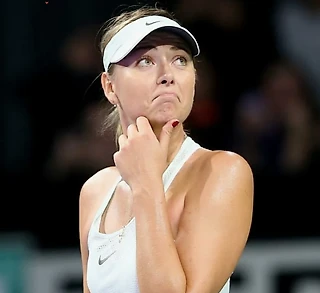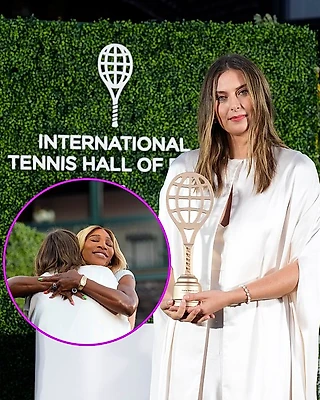WTA 2013 и будущее женского тенниса
Выставил часть из речи Стэйси Алластер в Стамбуле
Inspiration
I’m the luckiest woman in the world to represent the best female athletes for the past 40 years. It really is quite an honor. This 2013 40‑Love celebration had been about paying tribute to those that have built the WTA. We started with of course the Original Nine, these nine women who stood up to the establishment and said it wasn’t right that the men should be paid 12,000 and the women were only receiving 2,000. They set the journey and the course for change.
But then Billie took it one step further and took on the challenge of playing Bobby Riggs in the Battle of the Sexes match. I’m in tennis, and I thought I knew the story. But I must tell you this year has been such an educational year for me personally to learn more about how hard it was to be a woman in 1973, how hard it was for Billie, and the weight of the world that she had on her shoulders and the significance of what a tennis match was where it did change the lives of women forever.
Istanbul
Istanbul, absolutely a record Championships for the WTA. With 54 broadcasters, over a thousand hours will go out this week to 170 countries. In 2011 when we started here, we had approximately 17 million fans consume the TEB BNP Paribas WTA champions, whether it be broadcast, online, mobile. Last year we had 42 million, and I’m very certain that my team will deliver 50, 60 million of fans who will watch either online, on air, or on their mobile devices the 2013 edition.
Money
On the business side, presented to the board in 2010 a three‑year business plan. As we come to the end of that business plan, 2011, ’12, ’13, my team has been able to contract just over $200 million of revenues for women’s tennis.
In 1973, nobody believed women’s tennis would be commercially successful. $200 million in contract with our largest TV deal in our history, the largest Championships deal in our history, new assets being generated with being data content licensing, new tournaments, and new sponsors. Not only did every girl have an opportunity to play women’s tennis if she had the right, that sponsors and cities have stepped up to invest in women’s tennis.
Singapore
Turkey took us to this level, and now Singapore plans to take us to another level. A year ago I was here sharing with you the finalist candidate cities for the 2014 Championships. In April a passionate delegation from Singapore traveled to St. Petersburg, Florida, and they delivered truly the most incredible presentation to our board that on a hands‑down our choice was Singapore.
Why? Our confidence in their delivery with their infrastructure, their proven ability to stage world‑class events, whether it be the Formula 1 or Junior World Olympics. We have tremendous trust, respect, we like them, you all get a chance to meet them. There is a small group coming at the end of the week. A few are here today with us. They are just an incredible nation that will use our Championships, our athletes, to once again inspire more little boys and girls to play our sport.
I’m going to give you a sneak peek. This is not final. But how will the Championships change? Here, Istanbul we will start on Tuesday and be a six‑day event. In 2014, we will have seven days of tennis starting on Monday night. In addition, we will add four doubles teams, so we will be like the men’s Masters. We will have the top eight singles players and the top eight doubles teams.
In addition, we will add new events to the Championships format. Those events will take place most likely on the Friday, Saturday, Sunday leading into the Championships. We are working on this concept, but most likely it will be an invitational of rising stars, where those players who are on the cusp of making it to the Championships, those I introduced earlier, will play at an invitational.
We want to bring the WTA former champions back to their Championships. Will that be two, four, a Legends event? We’re working on that, but the great news is that we will bring our former greats back to their Championships. There will be pro‑ams for our corporate partners. The practice courts will be open to the public. And we will fully integrate the community and entertainment into these Championships.
In the new sports hub, the national stadium, there will be a concert on that opening weekend to celebrate the season, and there will be a fan fest for the full ten‑day Championships open for free so that our Championships will be accessible to everyone. As you can imagine, the fan fest will have all of those interactive activities to get racquets in kids’ and adults’ hands to promote our sport and have more people playing.
From the player perspective, there will be a party. Actually, there will be most likely two parties. There will be a draw party like we had last night, and we will reintroduce the year‑end party that we previously had in Madrid and that we had in Qatar. That most likely will be at the end either on the Saturday or the Sunday.
In addition, there will be industry conferences, whether sports marketing, women in leadership, sports science and medicine, coaching. The good news is we have five years of programming to fill, and what we want to be able to do is bring all of the industry to this season finale and this massive celebration of women’s tennis throughout 10 to 11 days.
For 2015, I will give you insight into our thoughts. The board will approve this in December, I’m quite certain. We will become an eight‑day Championships, Sunday to Sunday, and we will then adopt the full schedule that the men have where our athletes can play day on, day off. With the competitions being so tough, 6.5 million on offer this year, 7 million next year, the ranking points, everything that’s at stake, we need to give the athletes a day on, day off, just like they have at the Grand Slams and just like they have at our mandatory events. We believe that will produce our best product and give our athletes the best opportunity to perform on that stage.
Q. My question is about TV coverage mostly. I know obviously with Perform the number of matches that have been aired have been much bigger at a lot of tournaments. I’m wondering, at some of the combined events, it feels like sometimes the number of matches has slipped behind the number of men’s matches at like Indian Wells, Cincinnati, combined tournaments like that. I’m just wondering what you’re doing to try to address that and make that more level in the future.
STACEY ALLASTER: Good question. At our combined events there is a minimum standard, and everyone has met their minimum standards. Obviously the goal is to get more. With Perform now having a production model, and they will come in and produce a secondary court, we are working through the growing pains predominantly in the U.S. tournaments.We didn’t have that issue in Madrid. Perform came in and produced a second court.I do know Indian Wells is currently working with Perform, and Indian Wells is looking to having four courts. Don’t want to get ahead of ourselves with Indian Wells, but they are looking to dramatically increase the number of matches that will come out of Indian Wells. We need to do the same in Miami, and we need to work on Cincinnati.








